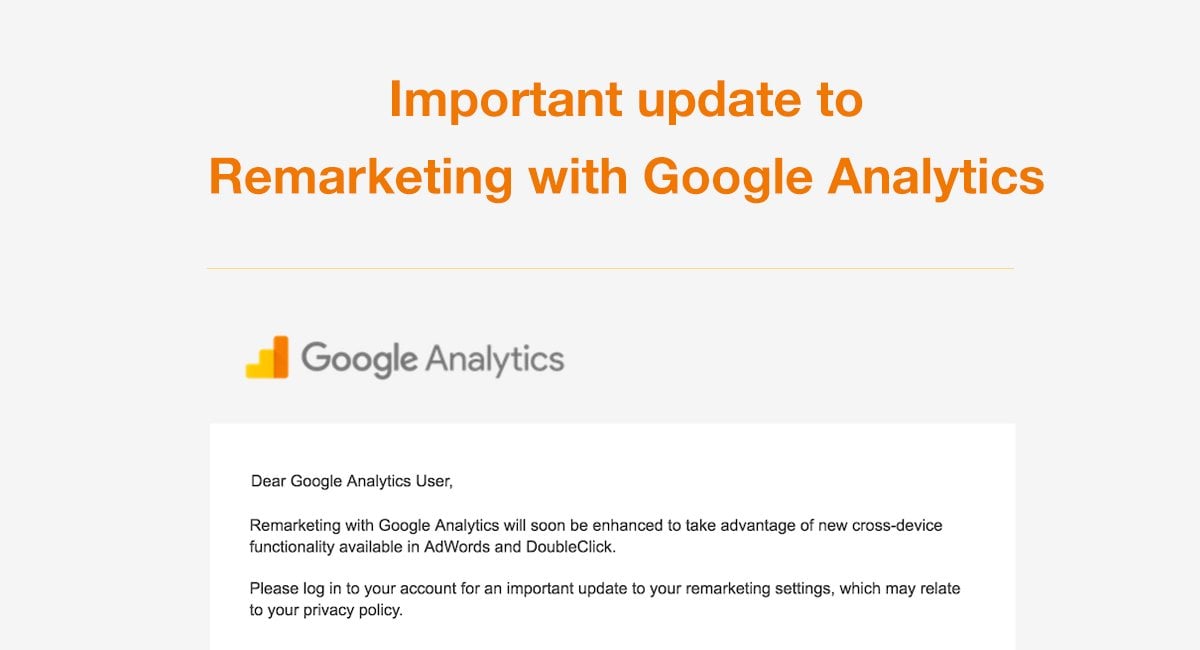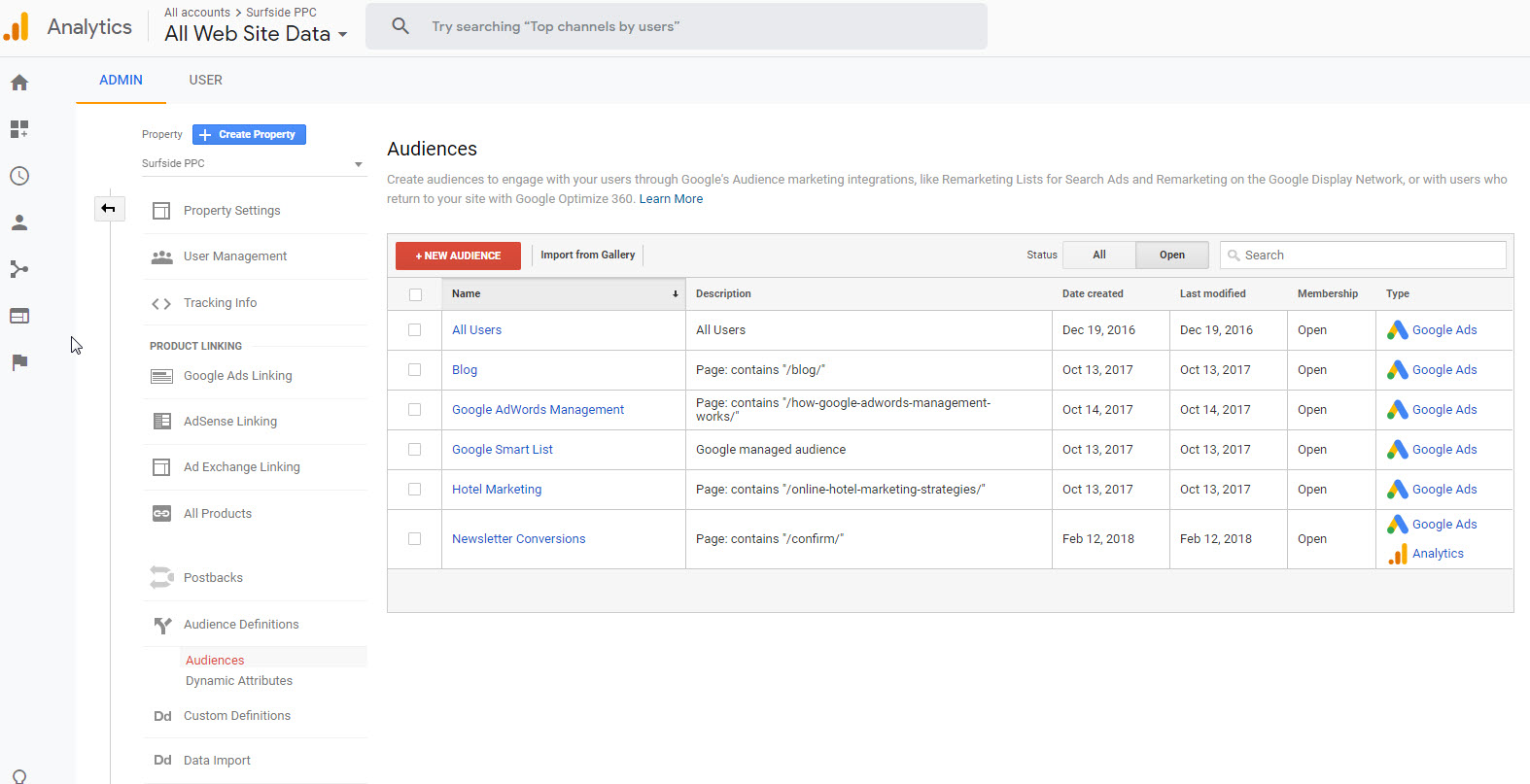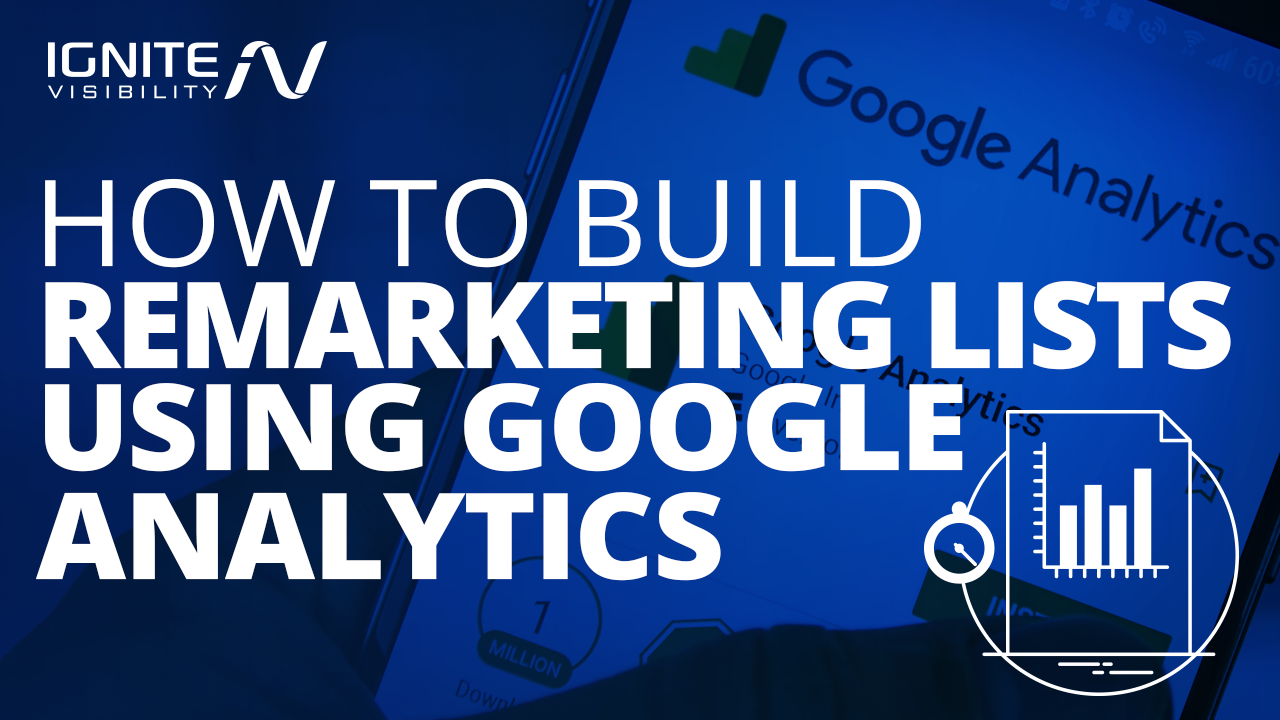Remarketing in Google Analytics: Changing Visitor Information Into Sales
The capacity to precisely target audiences based on their behavior and preferences opens doors to a realm of opportunities, driving companies in the direction of sustainable development and productivity. Through a thorough analysis of visitor activities and a customized remarketing technique, organizations can navigate the digital landscape with accuracy and skill, deciphering the true capacity of their on the internet existence.

Advantages of Remarketing in Google Analytics
Remarketing in Google Analytics uses services the possibility to reconnect with web site site visitors that have actually shown passion in their service or products, thus enhancing brand name visibility and conversions. By leveraging this powerful device, businesses can stay top-of-mind with possible clients who have already involved with their web site. Among the key advantages of remarketing is the capacity to target details audiences based upon their actions on the internet site, enabling individualized messaging and customized ad campaign.
Additionally, remarketing in Google Analytics can help organizations boost their conversion rates by re-engaging with visitors who might not have made an acquisition or completed a preferred action on the web site throughout their preliminary visit. This targeted technique can bring about greater conversion rates and ultimately drive even more sales. In addition, remarketing can additionally aid organizations develop brand name commitment and depend on by maintaining consistent communication with potential consumers throughout their buying trip.
Setting up Remarketing Campaigns
When launching remarketing campaigns in Google Analytics, organizations require to very carefully plan and implement strategic targeting techniques to properly reach their wanted target market. The primary step in setting up remarketing campaigns is to specify clear purposes. Whether the objective is to boost website conversions, advertise particular items, or elevate brand name awareness, having a distinct purpose will lead the whole campaign technique.
Following, businesses need to develop target market listings based on details criteria such as web site site visitors, individuals that abandoned their buying carts, or those that connected with specific content. These checklists enable targeted messaging tailored per sector of the target market, increasing the opportunities of conversion.

Lastly, businesses must set up conversion tracking to determine the success of their remarketing projects properly. By analyzing the performance information, services can maximize their projects for far better results and greater ROI.
Leveraging Audience Division for Remarketing
Making use of audience segmentation is a critical method for improving the effectiveness of remarketing campaigns in Google Analytics (What Is “Remarketing” In Google Analytics?). By separating your internet site visitors into distinctive teams based on their habits, demographics, or interests, you can tailor your remarketing initiatives to target these certain sections with appropriate advertisements. Audience division allows important link you to create more customized and targeted campaigns, boosting the opportunities of re-engaging site visitors and driving conversions
Segmenting your target market allows you to deliver customized messaging that resonates with each team's needs and preferences. You can create separate remarketing lists for individuals who deserted their buying carts, visited certain item pages, or downloaded and install a certain source. By recognizing the different motivations and passions of these sections, you can craft engaging ad creatives that are most likely to capture their focus and motivate them to review your website.
Moreover, target market division likewise helps you maximize your advertisement spend by focusing on high-value sections that are more likely to convert - What Is “Remarketing” In Google Analytics?. By assessing the performance of each section, you can allot your budget better and take full advantage of the return on your remarketing financial investment
Analyzing Remarketing Efficiency Metrics
To successfully assess the success of remarketing campaigns in Google Analytics, assessing crucial performance metrics is important. Metrics such as click-through rate (CTR), find more conversion rate, price per acquisition (CPA), and return on ad invest (ROAS) provide beneficial understandings into the efficiency of your remarketing efforts. CTR indicates the percentage of individuals that clicked your ad after seeing it, mirroring the ad's importance and interest your target market. Conversion rate gauges the percentage of customers who completed a preferred activity, such as making an acquisition, after clicking your ad. Certified public accountant assists figure out the expense of obtaining a consumer via your remarketing campaign, while ROAS evaluates the revenue produced for every dollar spent on advertising and marketing. By assessing these metrics, you can recognize areas for renovation, optimize your projects, and assign spending plan better to take full advantage of the ROI of your remarketing approaches in Google Analytics.

Finest Practices for Remarketing Success
Structure on the foundation of evaluating remarketing efficiency metrics, implementing best methods is crucial to attaining success in your remarketing endeavors. One vital best practice is to section your audience properly. By splitting your audience based on their behavior, demographics, or passions, you can produce customized messaging that resonates with each segment, eventually boosting the probability of conversion. In addition, guarantee that your remarketing ads are aesthetically attractive and have engaging contact us to action. Capturing the customer's focus and motivating them to take the wanted activity is crucial.
Pestering customers with the same advertisement repeatedly can lead to inconvenience and decreased effectiveness. Monitor your campaigns routinely, assess the data, and make data-driven decisions to continually refine your their explanation remarketing initiatives for optimal influence.
Final Thought
To conclude, remarketing in Google Analytics provides businesses the opportunity to take advantage of site visitor information to raise sales and drive conversions. By making use of audience segmentation, assessing performance metrics, and applying best practices, organizations can tailor their remarketing initiatives to target high-value sections properly. Through engaging advertisement creatives and conversion monitoring, businesses can construct brand name loyalty and trust fund, eventually making the most of the influence of their advertising and marketing techniques.
Via a meticulous evaluation of visitor actions and a customized remarketing strategy, companies can browse the electronic landscape with precision and finesse, unwinding the real possibility of their online visibility.
One of the key advantages of remarketing is the capacity to target details audiences based on their behavior on the internet site, enabling for individualized messaging and tailored marketing campaigns.
In addition, remarketing can also assist services develop brand name commitment and trust by keeping constant interaction with prospective consumers throughout their purchasing trip.
Metrics such as click-through price (CTR), conversion price, price per acquisition (CPA), and return on advertisement invest (ROAS) give useful understandings right into the effectiveness of your remarketing initiatives. By analyzing these metrics, you can determine locations for renovation, optimize your projects, and designate spending plan more effectively to optimize the ROI of your remarketing approaches in Google Analytics.